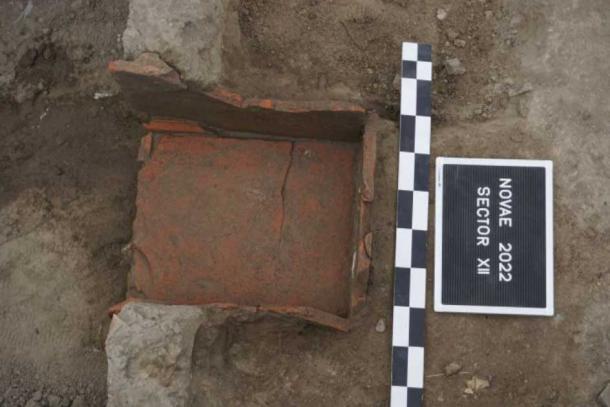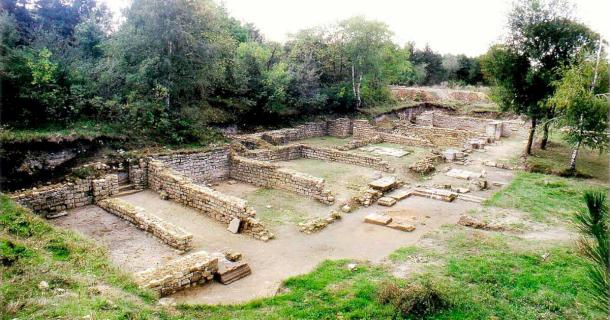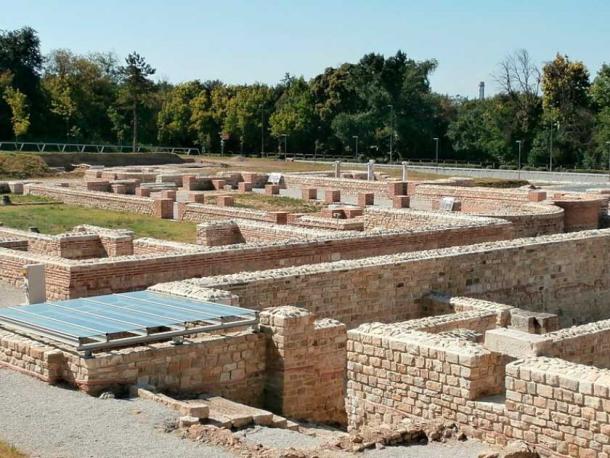[ad_1]
Over the previous few a long time, archaeologists in Bulgaria and Poland have been excavating the positioning the place the Roman military fort of Nowe as soon as stood. The ruins of the fortress will be discovered alongside the Danube River in northern Bulgaria, the place Roman occupiers established and defended a territorial border 2,000 years in the past. The continued excavations there have yielded many exceptional and enlightening discoveries, and the checklist of those unearthed wonders now consists of an historical instance of a sustainable and common expertise – the fridge.
As reported by the Polish Press Company (PAP), a group of archaeologists led by Professor Piotr Dijk, of the Antiquities of the Southeastern Europe Analysis Middle on the College of Warsaw, was looking a ground under the fortress once they have been in a sq.. Aye, a box-like container product of thick, purple coloured ceramic plates. Archaeologists have been in a position to establish this manufactured merchandise as an historical model of an icebox or fridge, now used to retailer perishable meals.

Nowe Roman Settlement, Bulgaria (P. Dijk / pulp,
Roman ingenuity on show
A Roman fridge was discovered inside a army barracks. It was a built-in aspect put in in a distinct segment within the stone ground of the constructing, which means it might solely be opened from above. This design ensured that it could have been fairly properly insulated from the chilly stone that surrounded it on three sides.
Since Bulgaria experiences temperatures under freezing for 5 months annually, Roman troopers might accumulate ice or snow to position inside packing containers to maintain their meals cool and contemporary throughout the winter.
The researchers have been happy to search out that the ceramic storage field was not empty. Inside the fridge they discovered fragments of porcelain, together with many cracked bone fragments, probably remnants of cooked meals. Additionally they discovered a bowl containing charcoal, which they imagine might have been used to push back bugs.
Nowe Fort was constructed throughout the 1st century AD. The meals storage field seems to have been put in at the moment, as a pure aspect within the constructing of the absolutely completed military barracks.

A part of the Nova Legionary Headquarters. , CC BY-SA 3.0 ,
The cleverly designed icebox or fridge was not the one notable discovery by Polish and Bulgarian archaeologists throughout the newest excavation season. He additionally found a cache of a number of dozen cash, once more from the Roman period. Cash have been found within the third and 4th centuries AD, a interval booked by the Goth raids of the third century and the Roman emperor’s ascension to Constantine the Nice in 306.
One other attention-grabbing discovery have been the stays of a Roman dwelling that was situated contained in the fort partitions. Archaeologists discovered some artifacts inside this constructing, together with a number of grinding stones, fishing weights and extra ceramic vessels. It might have been a civilian home quite than a construction occupied by troopers.
Defending the Empire: The Story of Novi
Archaeologists found the fortress of Novae in an space that was as soon as a part of the Roman province of Moesia. This rugged, mountainous area was bounded by the Danube River to the north, the Balkan Mountains to the south, and the Black Sea to the east.
Representatives of Macedonian, the primary Roman emperor Augustus, invaded and conquered this Balkan area on the finish of the first century BC. In 6 AD it was formally included into the Roman Empire and given its provincial title.
In AD 69, Roman officers turned involved about doable encroachment on their lands by the neighboring Dacian peoples, who have been now primarily based in Romania. Building on the Danube fortress of Nowe would have begun round this time, and when Moesia was break up in half in AD 86, Novae Moesia turned the first defensive outpost for the brand new province of Inferior.
The nove was constructed because the everlasting residence of the First Italian Military, which consisted solely of Roman troopers from Italy and was constructed particularly to defend the Moesian area from Dacian invasion. The concern of the Roman authorities appears to have been justified, as conflict broke out between the Dacians and the armies of the Roman emperor Trajan within the early 2nd century AD. The nove served as a base camp for the profitable protection of the area, proving its worth and significance to the empire’s ambitions within the area.
To make sure that the nove was appropriate for long-term residence, its builders put in a posh water provide system product of ceramic and lead pipes that introduced clear water to the fort and its related civil settlement. For the reason that water high quality of the Danube was poor, it was essential to hyperlink the water provide system to the Dermen River, which required the architect and building group to construct an aqueduct about six miles (10 kilometers) lengthy. Imported water was saved in two massive reservoirs on the web site, from the place it might be distributed via a community of canals and water pipes all through the fort grounds.
No estimate has been product of how many individuals might have lived contained in the stone partitions across the nove. However the inhabitants should have been comparatively substantial, particularly after the fort partitions have been moved outward and rebuilt within the 4th century AD to encircle the close by civilian settlement.

Nova Bishop’s Palace with the Cathedral throughout the Reconstruction of the Metropolis in Nova, Bulgaria. , CC BY-SA 4.0 ,
“Throughout this time, Nowe steadily developed right into a civilian metropolis,” Professor Dijk mentioned in a PAP article revealing the outcomes of the most recent excavations. “Because of the most recent discoveries, now we have obtained sufficient information to have the ability to reconstruct this piece of historical past of this historical settlement, which till now was shrouded in thriller to us.”
Professor Dijk mentioned the traditional first-century fridge was a very uncommon discover, as buildings of that kind usually don’t survive the ravages of time.
High picture: Historical Roman fridge discovered within the Nowe Roman settlement of Bulgaria. Supply: P. Dijk / pulp
by Nathan Falde
[ad_2]
Supply hyperlink